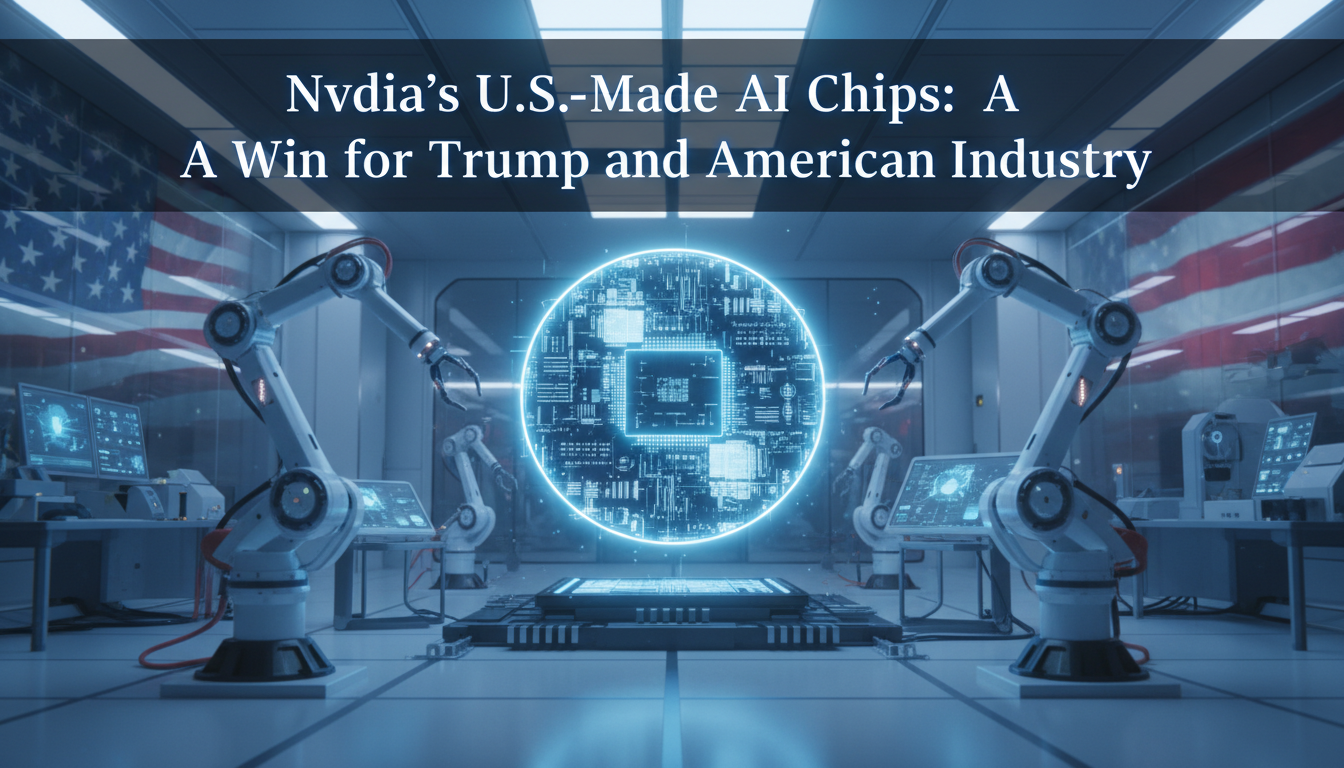Nvidia’s most advanced AI chips are now being manufactured in the United States for the first time, a milestone CEO Jensen Huang calls a “historic moment” for technology and industrial policy. Volume production of Blackwell wafers has begun at Taiwan Semiconductor Manufacturing Co.’s (TSMC) leading-edge fab in Phoenix, Arizona—signaling a structural shift in how critical compute capacity is sourced and secured.
Huang directly credited tariff and energy policies championed by President Donald Trump as catalysts that accelerated onshoring decisions. The ceremony commemorating the first U.S.-made Blackwell wafer underscored a strategic reorientation toward domestic production of the most valuable, complex chips in the world.
Why this matters for markets
- Supply assurance: U.S.-based wafer output de-risks deliveries to hyperscalers and sovereign buyers, improving resilience amid geopolitical and logistics uncertainty.
- Capex flywheel: Onshoring tends to pull adjacent investments—advanced packaging, test, substrates—while accelerating AI data center construction. Huang estimates roughly $500 billion could be invested in U.S. AI supercomputing systems over the next several years.
- Pricing and mix: Leading-edge accelerator supply remains tight; the shift is about reliability and throughput, not immediate cost relief. Blackwell’s ramp should support a rich product mix and margin durability.
A huge political win for Trump
- Policy validation: Huang’s explicit praise ties a landmark industrial outcome to Trump’s tariff and energy agenda, offering rare, high-profile validation from the world’s most valuable AI company. It bolsters the narrative that tariffs and a tougher industrial stance can repatriate critical manufacturing.
- Reindustrialization optics: The image of the “world’s most advanced AI chips” being produced in Arizona is a marquee deliverable for Trump’s reindustrialization promise—supporting claims of job creation, strategic autonomy, and national security.
- Competitive framing: As other nations subsidize domestic chip capacity, U.S. production at the leading edge strengthens the argument for sustained, assertive industrial policy—an arena where Trump can claim first-mover credit.
- Policy durability: The win may increase political capital to preserve or adapt tariff-based tools and complementary incentives. It also raises the stakes around the Supreme Court’s review of certain tariff authorities; a decision that narrows executive levers could complicate future reshoring momentum.
Sector implications
- Semiconductors:
- Nvidia (NVDA): Reinforces leadership into the Blackwell cycle; U.S. capacity strengthens delivery confidence to large buyers.
- TSMC (TSM): Validates multi-geo strategy; Phoenix yields and throughput are key watch items.
- Competitors (AMD, AVGO): Potential spillover benefits as U.S. ecosystem deepens.
- Advanced packaging and memory:
- Focus shifts to bottlenecks in 2.5D/3D packaging and HBM supply; credible U.S.-based expansions would mark the next leg of de-risking.
- Data centers and power:
- AI campuses drive prolonged capex in high-density power, liquid cooling, thermal management, and grid interconnects; utilities face long-duration load growth.
- Labor:
- Elevated demand for electricians, welders, precision technicians, and fab operations talent could elongate timelines but underwrite multi-year backlogs for contractors and technical education providers.
Risks to monitor
- Legal uncertainty: Supreme Court review of tariff authorities could reshape the industrial policy toolkit and corporate planning assumptions.
- Execution: Leading-edge ramps carry yield and supply-chain coordination risks, particularly around packaging and HBM.
- Cost curve: U.S. fabs are structurally higher-cost; competitiveness depends on scale, learning effects, and stable policy support.
- Demand concentration: AI capex remains concentrated among a handful of hyperscalers; any moderation in training intensity or a pivot to efficiency cycles could temper growth.
What to watch next
- Phoenix ramp milestones: Yield stabilization, wafer starts, and Blackwell module throughput.
- Packaging and substrate announcements: Evidence of U.S. 2.5D/3D packaging capacity and HBM throughput increases.
- Hyperscaler capex guides: 2026–2027 AI spend cadence, power procurement, and campus timelines.
- Policy and legal developments: Supreme Court timeline and any legislative recalibration affecting tariffs and incentives.
Bottom line
Nvidia’s U.S. production of Blackwell chips is both a practical de-risking of the AI supply chain and a powerful political proof point for Trump’s reindustrialization thesis. For investors, it supports a durable, multi-year cycle across semis, advanced packaging, thermal and power infrastructure, and specialized construction. While legal and execution risks persist, the trajectory favors deeper domestic capability and sustained AI infrastructure outlays—reinforcing both market and political momentum behind onshoring at the technological frontier.
Sources: ZeroHedge, Fox Business, Fox News


